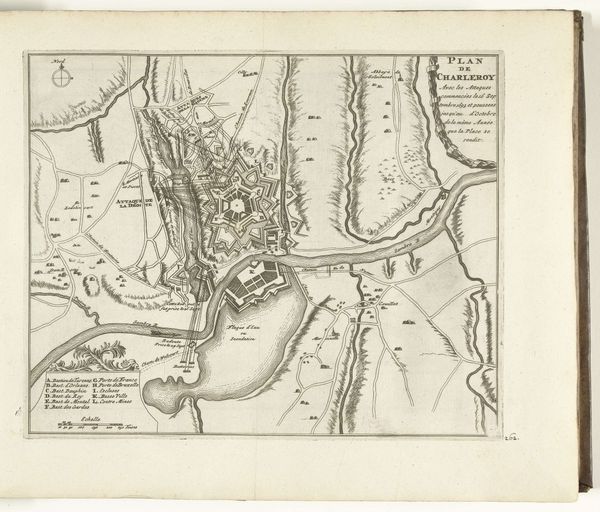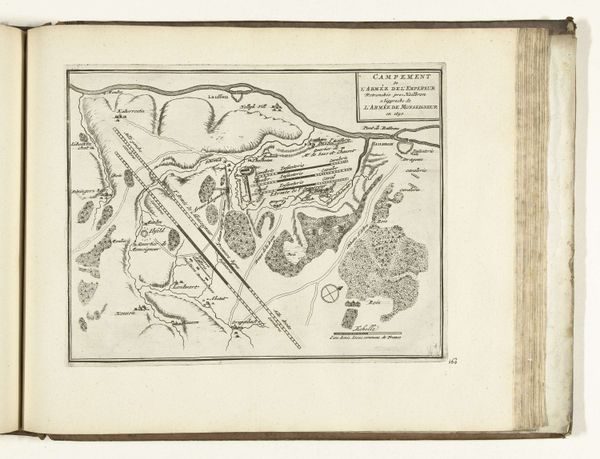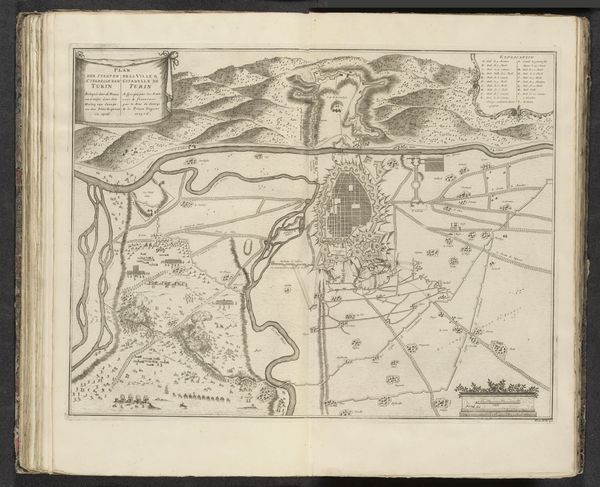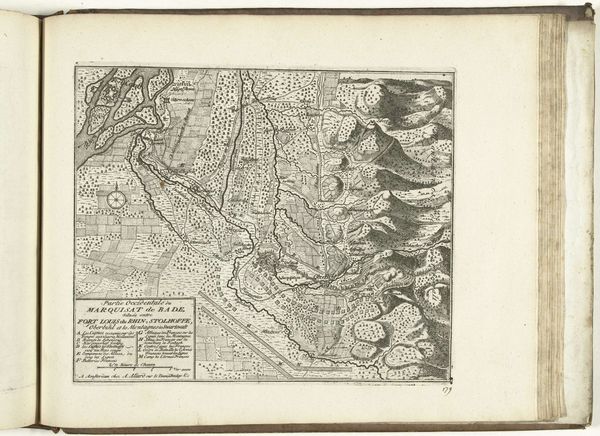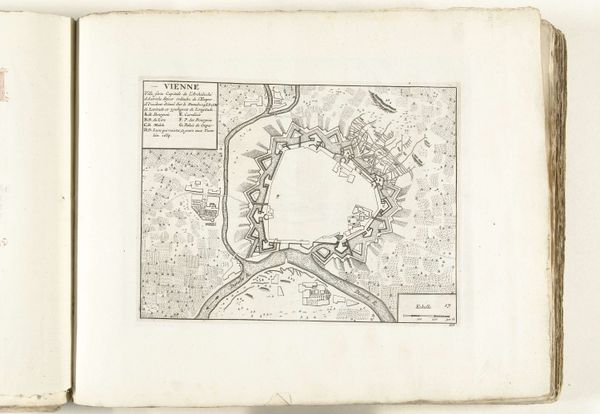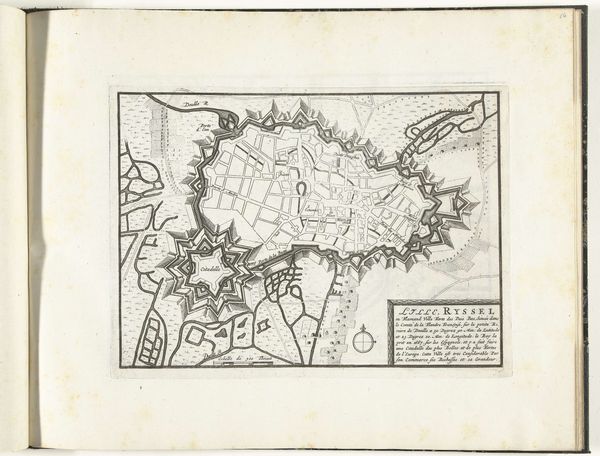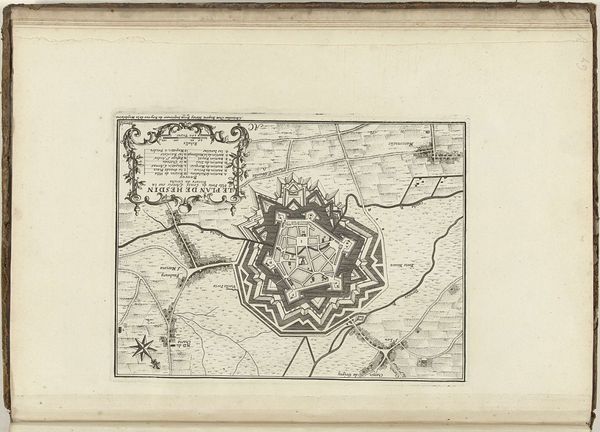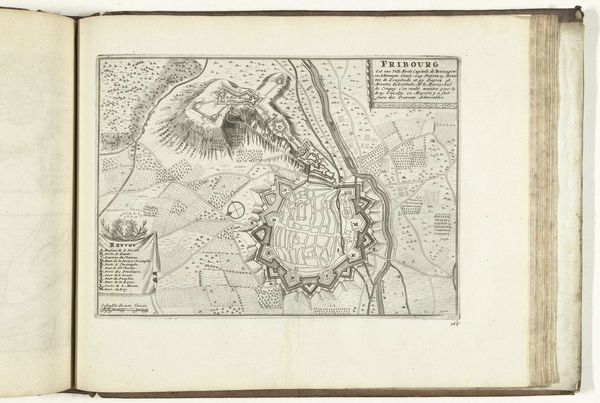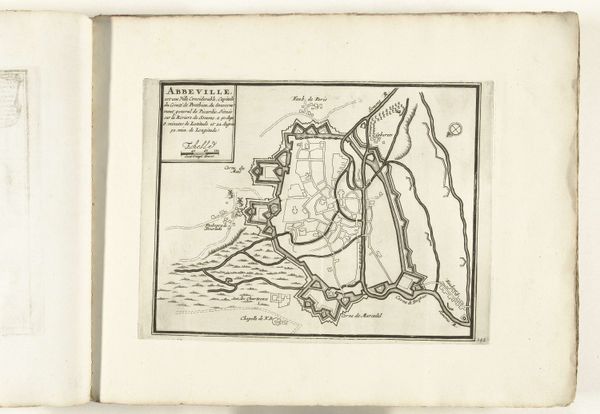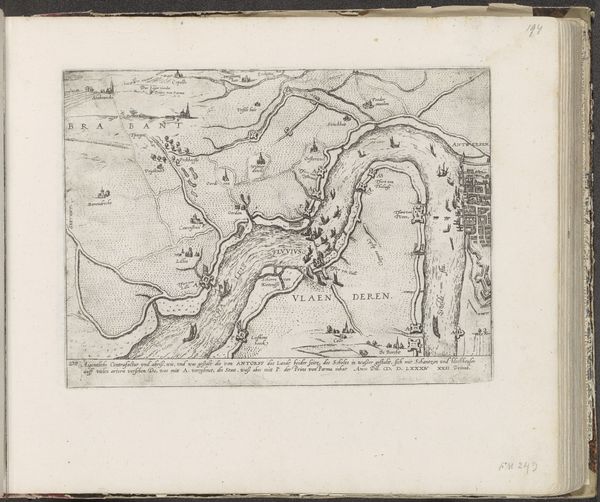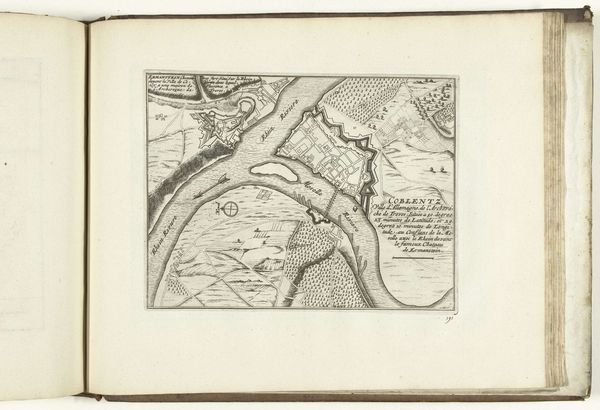
drawing, print, paper, ink
#
drawing
#
baroque
#
pen drawing
# print
#
paper
#
ink
#
cityscape
#
history-painting
Dimensions: height 205 mm, width 273 mm
Copyright: Rijks Museum: Open Domain
Curator: This is a map titled "Plattegrond van Breisach, 1726," created anonymously. It's a detailed rendering of the city using pen, ink, and print on paper, and it’s currently held here at the Rijksmuseum. Editor: It’s striking how ordered the overall composition is, even with the chaotic swirls of the river. There's an intricate quality that draws you in. Curator: Exactly. The Baroque period prized detail, but what's fascinating here is not just the visual representation but also the power dynamics at play. Breisach was strategically important. Its portrayal tells us much about the geopolitics of the era. Who had access to this map, what was its purpose? That's where the analysis deepens. Editor: You see those jagged edges radiating around the city? That speaks to how the city invested heavily in its military. How many laborers must it have taken to fortify this location, making bricks and mixing mortar? Curator: Indeed, these star-shaped fortifications are the subject of much historical military theory. Think about the relationship between territory and power. But I'm curious—do you think the choice of pen and ink is important in shaping this map's reception? Editor: Absolutely! The linear precision achieved with these materials is instrumental. Imagine if it were embroidered! Ink renders fortifications in high detail. It's the very tool to mark, categorize, and assert dominance over resources and labor. Curator: I'm drawn to thinking about what the idea of territory and militarization would suggest. I can't help but look at these fortifications today, during an era of climate catastrophes. Who benefits from control over territory at this point? Editor: I'm thinking about the social cost of maintaining it. What materials came from where? And who were the tradesmen involved? Even maps are deeply embedded in webs of exploitation and production. Curator: Seeing it this way really allows one to recognize cartography as more than just documentation; it embodies an act of asserting political authority, as a visualization of resources being invested toward the consolidation of military might. Editor: Well said. I’ve never quite thought about maps that way.
Comments
No comments
Be the first to comment and join the conversation on the ultimate creative platform.
